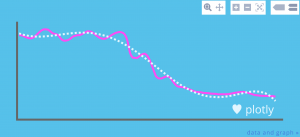Content distribution is the spotlight that illuminates your content.
The material you produce could be fantastic and align very well with the needs of your customers, but without proper distribution, your target audience will not find the content, which means that all your hard work will go to waste. Your content will not successfully fulfill its job.
The ability to promote your content and find an audience is critical to successful content marketing.
We will walk you through what you need to know about the purpose of content distribution and how to use it successfully.
- What is meant by content distribution?
- Why is content distribution important?
- What is a content distribution strategy?
- How to create a content distribution strategy
- Effective content distribution tools
- Get started with your content distribution
What is meant by content distribution?
Content distribution refers to the different channels you have available to you to promote your content.
The different channels allow you to feed your content into different starting points on the vast, interconnecting networks that make up the internet.
Each channel allows you to target slightly different parts of your audience.
When your content distribution strategy works successfully, you will launch content through a few channels and then people will naturally pick it up, find it interesting, and share it on their own networks.
The reach of your content will continue to expand and bring you more opportunities for leads and sales.
Why is content distribution important?
Content distribution plays a critical role in the content creation process because it helps the material accomplish its duty.
Without proper distribution, the content your brand produces will not be able to effectively bring in new leads and customers, which results in wasted time and effort.
Brands that do not prioritize content distribution, and instead hope and wait for organic searches to pick up their content and drive interest, will find it harder to gain any traction with their material.
It can take a while for search engines to find and rank content highly, which means that brands will allow a significant portion of their content to go stale before it attracts attention.
Not only does this detract from the overall success of the brand’s efforts, but it will also make it more difficult to know what types of content customers actually appreciate.
These companies will not have any metrics they can monitor to see what types of material attract the most attention for different customer segments, which content brings in the most successful deals, and how customer priorities shift over time and throughout the buyer’s journey.
Without this data, these organizations would place themselves at risk of wasting business resources.
Types of content distribution
To understand how these different channels can work together in a content distribution strategy, it helps to look at the main types of media you can use to promote your material.
There are four main categories you should consider.
- Owned media
Owned media refers to channels your brand directly controls. The most obvious example of owned media would be your website.
You can use your website to publish new content and promote it to existing visitors with links.
Other types of owned media will include your email and newsletters, both of which can help you push content out in front of potentially interested buyer personas.
- Social media
The next major type of media to consider would be social media.
Brands can set up profiles on a variety of different social media platforms and participate in community discussions with their followers and target audience.
You can also use these profiles to distribute content, particularly when it ties in closely with what interests your community and the discussions they have.
- Earned media
Earned media refers to promotion and distribution that you earn through creating excellent content and providing outstanding service.
This occurs when people distribute your content on their own social media sites, repost posts that you made, leave reviews for your products and services, or otherwise promote your brand to their own followers.
- Paid media
Finally, you can use paid advertising setups to help you get your message out to your target audience.
Paid media strategies can be used in a variety of different environments, with you choosing the ones that match your goals best.
You can create ads for social media, search engines, and even other websites. You create ads that let people know why they should read and engage with your content.
Brands use these different channels together to promote their content and encourage people to read their material. They often work best together, such as using owned and social media channels, to drive interest in their content.
We will explore how you can create a successful content distribution strategy shortly.
What is a content distribution strategy?
Your content distribution strategy will bring together the different channels you have available for your content, the audience you want to target, and how you will use these different strategies together to draw readers to your content.
As you begin to consider how you might build a content distribution strategy, you want to think about the different types of content you have available.
There are several different types of material that you might create and push through your content distribution network.
Here are a few of the most common types of material brands promote:
- Blog posts and articles
- White papers
- Original reports and research
- Infographics
- Cast studies
- Videos
- Podcasts
- Newsletters
- Ebooks
- Guides
Your strategy will provide you with ideas to get the content in front of its intended audience. It offers all the different members of the marketing and sales team a clear idea of how this content will be distributed and the type of audience member you want to attract with it.
As you build a firm strategy, you will also find it easier to define your key performance indicators, or KPIs, that you will then employ to better understand how well the content performs on its different channels and its ability to successfully bring in leads.
How to create a content distribution strategy
Here are the key steps you want to keep in mind to identify the best path for distributing a specific piece of content.
- Know the target audience for the type of content you want to promote. Consider the channels where you commonly find this audience and where your audience typically turns when they want to discuss topics related to your piece of content.
- Define what you want to accomplish with this content. For example, is it Top of Funnel content that you want to use to spark interest in your brand and attract more followers on social channels and email lists? Is it Bottom of Funnel content that you want people to view and then sign up for a free trial or speak with a representative about how your product can help them? Know how you will measure success.
- Determine the tone of voice and messages you can use to promote your content. With your target audience and the channels, you will use in mind, think about how you can create a message that will encourage people to click on your content. You do not want to just post a link, you need to draw the audience in somehow.
- Measure your content success rates. Depending upon your identified KPIs and digital marketing metrics, you now want to collect data about the success of your content distribution. For example, if you want to drive attention to your content through social media, you might look at how many clicks your posts receive, the traffic rate on your website, and how many reposts your content achieves.
Working through these strategies can help you create effective content distribution networks.
Using the data you collect from your efforts, you will also be able to identify when your strategy excels and when it falls short, helping you further adjust your technique and improve your efforts.
Effective content distribution tools
For successful content distribution, you need to focus your efforts on two main parts of the process:
- You need to bring in high-quality content. Content that resonates with the target audience will see greater success than content that does not, regardless of the efficiency of your distribution network. Therefore, aligning the content well with audience interests and concerns and then relying on talented, professional writers will play a critical component in your distribution.
- Secondly, you want to identify tools that can help you effectively use your distribution channels. Most brands want to call upon a specific email and newsletter service that allows them to segment their emails and create professional messages. Tools that allow you to post and schedule posts on different social media networks and then track the success of each entry will also be important. Finally, have a tool that helps you track your website traffic and on-page engagement.
Get started with your content distribution
It’s time to take that first step toward successful content distribution.
You need high-quality content that will delight readers and drive engagement.
WriterAccess professionals have the experience you need to produce the content your customers appreciate. Get started now with a 2-week trial and start filling out your content calendar and distribution channels with the material that will drive your brand forward.








